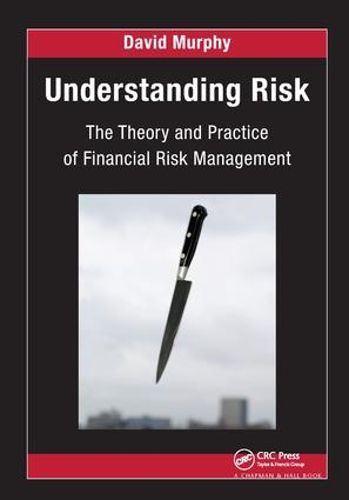Readings Newsletter
Become a Readings Member to make your shopping experience even easier.
Sign in or sign up for free!
You’re not far away from qualifying for FREE standard shipping within Australia
You’ve qualified for FREE standard shipping within Australia
The cart is loading…






Sound risk management often involves a combination of both mathematical and practical aspects. Taking this into account, Understanding Risk: The Theory and Practice of Financial Risk Management explains how to understand financial risk and how the severity and frequency of losses can be controlled. It combines a quantitative approach with a more informal style, giving readers a blend of analysis and intuition.
Divided into four parts, the book begins by introducing the basics of risk management and the behavior of financial instruments. The next section focuses on regulatory capital standards and models, addressing value-at-risk (VaR) models, portfolio credit risk, tranching, operational risk, and the Basel accords. The author then deals with asset/liability management (ALM) and liquidity management. The last part explores structured finance and a variety of new trading instruments, including inflation-linked products, sophisticated equity basket options, and convertible bonds.
With numerous exercises, figures, and examples throughout, this book offers valuable insight on various aspects of financial risk management.
$9.00 standard shipping within Australia
FREE standard shipping within Australia for orders over $100.00
Express & International shipping calculated at checkout
Stock availability can be subject to change without notice. We recommend calling the shop or contacting our online team to check availability of low stock items. Please see our Shopping Online page for more details.
Sound risk management often involves a combination of both mathematical and practical aspects. Taking this into account, Understanding Risk: The Theory and Practice of Financial Risk Management explains how to understand financial risk and how the severity and frequency of losses can be controlled. It combines a quantitative approach with a more informal style, giving readers a blend of analysis and intuition.
Divided into four parts, the book begins by introducing the basics of risk management and the behavior of financial instruments. The next section focuses on regulatory capital standards and models, addressing value-at-risk (VaR) models, portfolio credit risk, tranching, operational risk, and the Basel accords. The author then deals with asset/liability management (ALM) and liquidity management. The last part explores structured finance and a variety of new trading instruments, including inflation-linked products, sophisticated equity basket options, and convertible bonds.
With numerous exercises, figures, and examples throughout, this book offers valuable insight on various aspects of financial risk management.